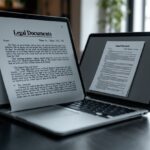Table of Contents
Understanding the Allegations Against Cuomo
The recent investigative report released by the House Select Subcommittee on the Coronavirus Pandemic has sent shockwaves through New York and beyond. The report, which spans over 500 pages, accuses former Governor Andrew Cuomo of committing “medical malpractice” and deliberately underreporting COVID-19 related deaths in nursing homes.
This revelation has reignited discussions about accountability and transparency in government, especially during a public health crisis.
Cuomo’s administration faced intense scrutiny during the pandemic, particularly regarding a controversial directive issued in March 2020 that mandated nursing homes to accept recovering COVID-19 patients.
Critics argue that this decision contributed to a surge in deaths among vulnerable populations. The report highlights that Cuomo was not only aware of the implications of this directive but was also actively involved in its implementation.
Key Findings of the Report
Among the most alarming findings is the assertion that Cuomo likely provided false statements regarding his role in the pandemic response. The report indicates that he attempted to influence witness testimony and obstruct the investigation, raising serious ethical concerns. The bipartisan consensus within the committee underscores the gravity of the allegations, with members from both parties agreeing that Cuomo’s actions were detrimental to public health.
Furthermore, the report details how Cuomo’s administration allegedly downplayed the number of nursing home deaths in a July 2020 report, which has been interpreted as an effort to protect his political image. This manipulation of data not only misled the public but also hindered efforts to understand the true impact of the pandemic on nursing home residents.
The Political Fallout and Public Reaction
Cuomo, who resigned in 2021 amid sexual misconduct allegations, has dismissed the report as a partisan attack. His spokesperson characterized the findings as politically motivated, claiming that the investigation was an abuse of power aimed at punishing perceived enemies.
However, families of nursing home residents who died from COVID-19 have expressed relief that Cuomo is finally facing scrutiny for his actions.
As the debate continues, the implications of this report extend beyond Cuomo himself. It raises critical questions about how government officials manage public health crises and the importance of transparency and accountability. The ongoing discussions about Cuomo’s legacy will likely shape the political landscape in New York for years to come, particularly as he considers a potential political comeback.




